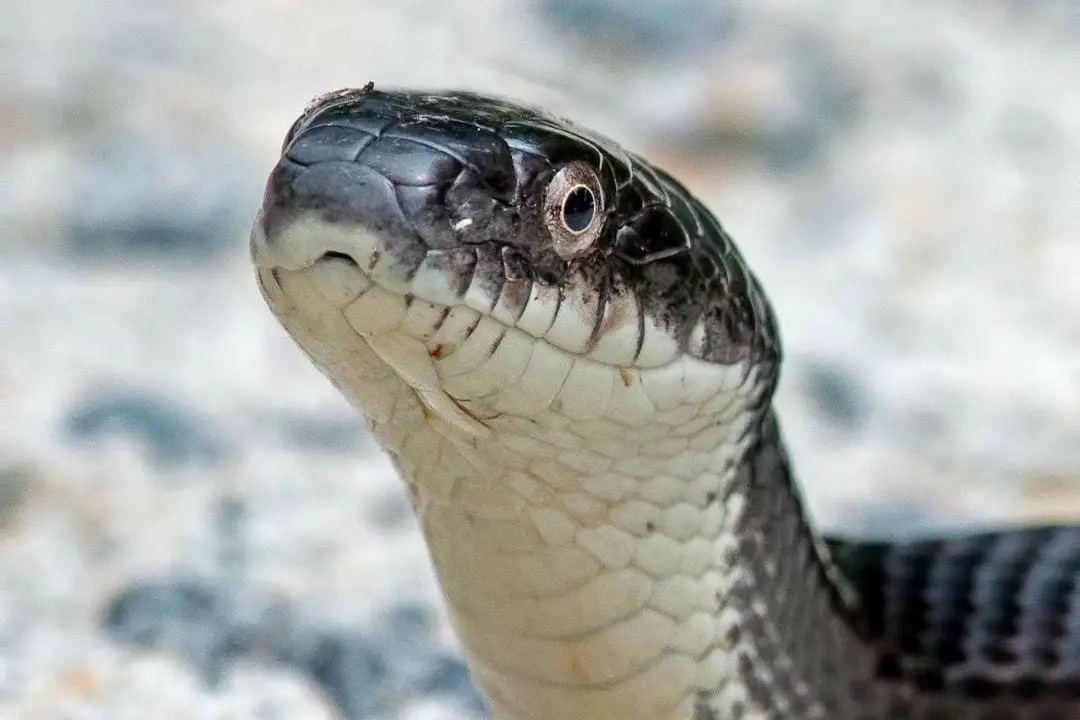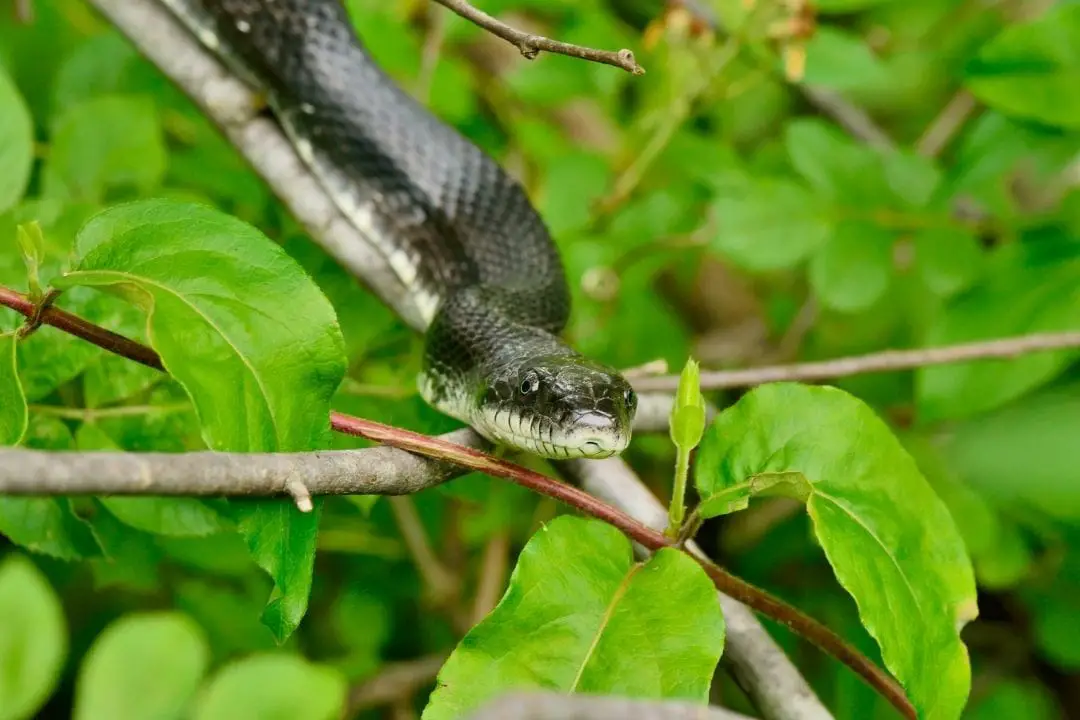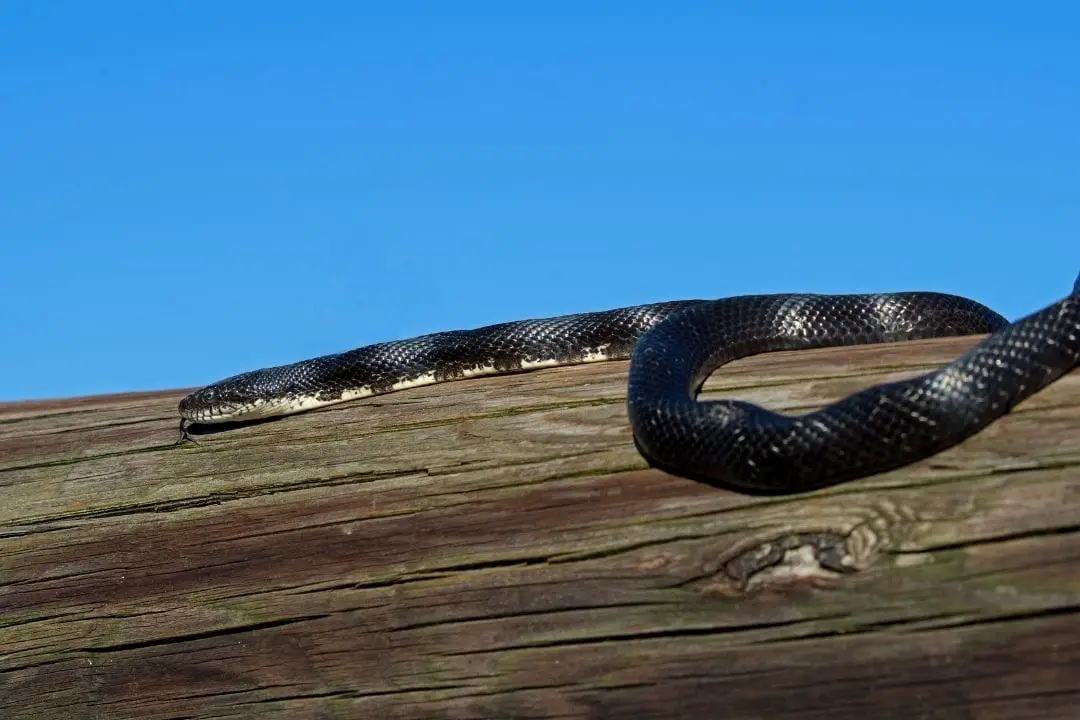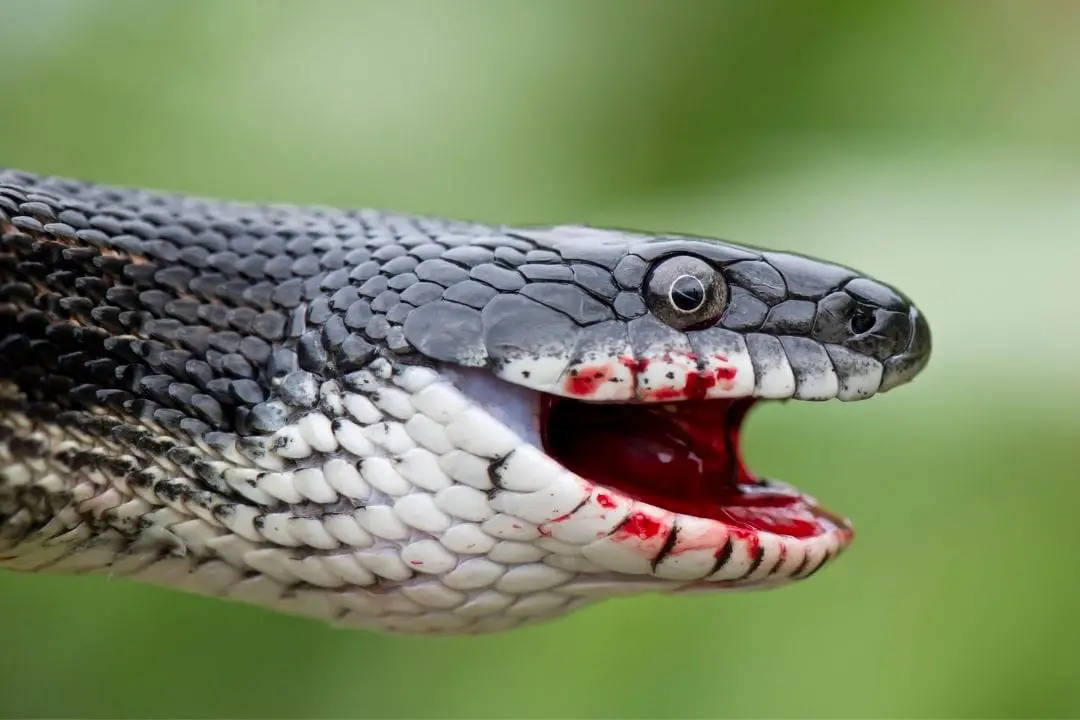The black rat snake (Pantherophis alleghaniensis) is a common sighting in the eastern and central United Snakes. Whether you have encountered one in the wild or you are considering keeping one as a pet, you may be wondering what they eat.
The black rat snake eats primarily rodents like mice, rats, and voles. They will also eat lizards, amphibians, and birds as well as bird eggs.
In the Wild
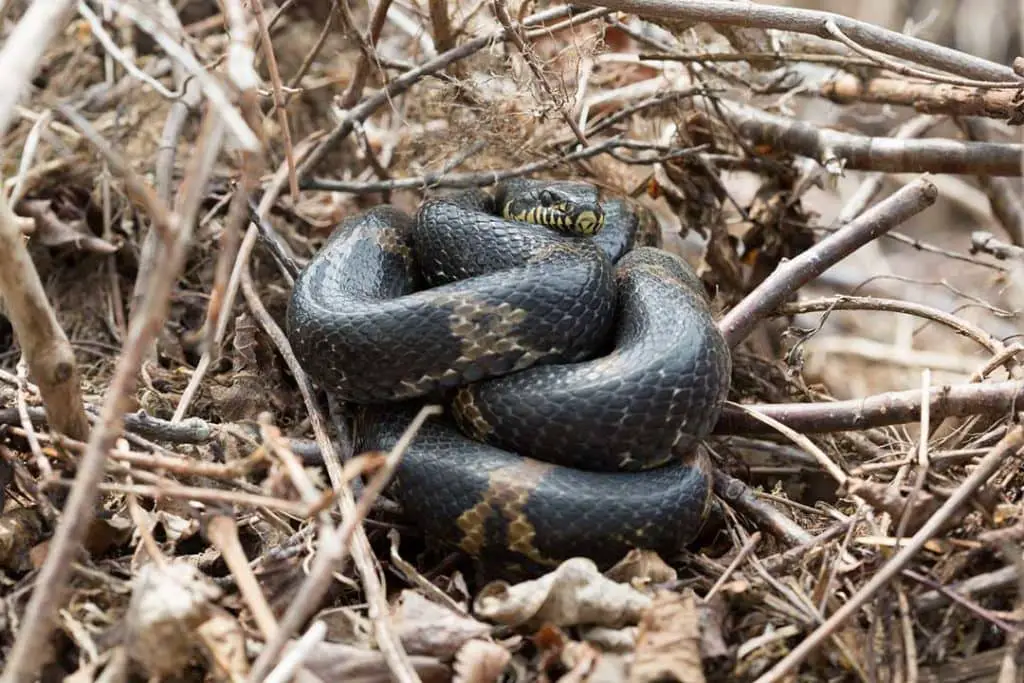
Black rat snakes are considered part of the colubrid family. Recent genetic studies have revealed that these snakes are more closely related to North American kingsnakes than they are to the Old World rat snakes of the genus Elaphe.
Some organizations still place these snakes in Elaphe while others accept the new genus Pantherophis. You may see either name used for these snakes until a consensus is reached. Black rat snakes are also known as eastern rat snakes.
These animals grow between 3.5 and 7 feet. Some individuals can reach over 8 feet. Most males are slightly longer. These animals can be found over a wide range of habitats that go from rocky hillsides to farmland.
The name rat snake comes from the fact that these snakes will regularly consume troublesome rats and other rodents from human settlements. These animals are the friend of farmers since they help control the rodent population. These animals are excellent climbers and will climb trees and walls looking for birds, rodents, and other properly sized prey.
Adults will typically prefer warm-blooded prey like mammals and birds. Young snakes will go after cold-blooded prey such as lizards and amphibians.
One interesting fact to note about these snakes is that they may kill multiple prey items during one hunting session. The snake will kill one animal and leave it behind to consume later.
It will then use the scent of the prey to sneak up on other prey. It will then consume multiple prey items. Like all rat snakes, these animals are beneficial to humans. They control the rodent population as well as the population of parasites such as ticks and fleas that target rodents.
These snakes are not harmful to humans since they are non-venomous constrictors. They are shy in the wild and will prefer to flee or produce a foul scent to ward off predators and humans. They will mimic rattlesnakes by changing their head shape and will shake their tail as well. Biting is generally a last resort.
In Captivity
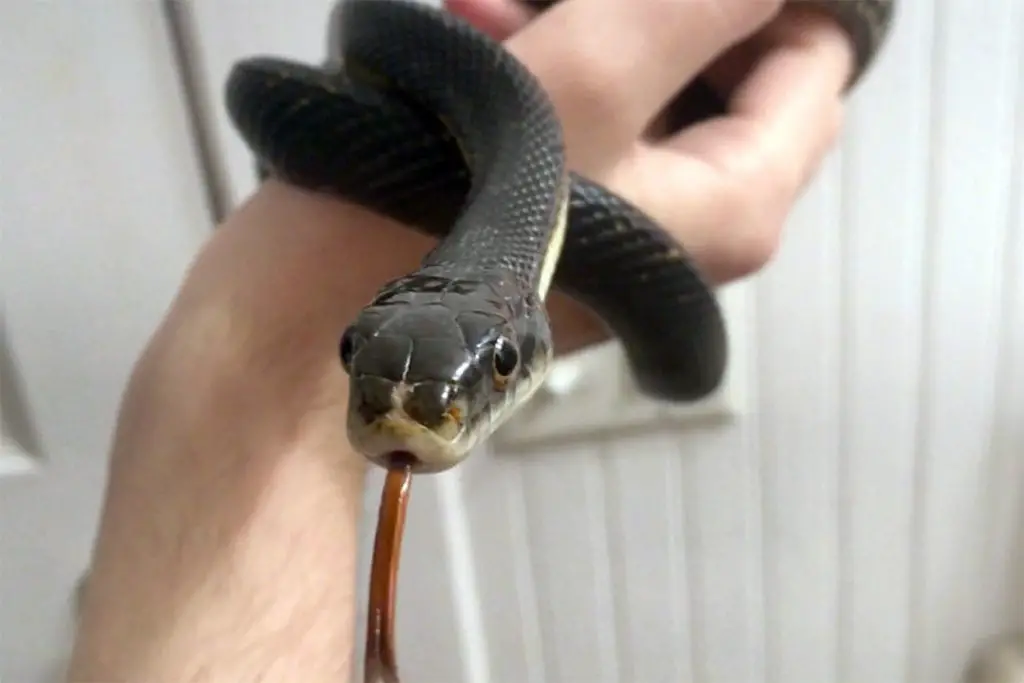
Everything you need to know about caring for Black Rat Snakes in captivity:
Read our Black Rat Snake Care Sheet (Complete Guide)
The black rat snake is one of the more common snakes in the pet trade. While juveniles can be anxious and snappy, adults will typically tame down with regular handling.
They are docile and curious animals that are typically active during the day. This means that they are easier to observe and will typically tolerate handling well. Since their wild diet features rodents, they are also easy to feed in captivity. Most owners will offer frozen and thawed mice or rats to their snakes.
While live prey can be fed, once the snake is feeding on adult mice and older rats the risk of injury or death to the snake increases. This species is known for having a good appetite, so they will rarely refuse pre-killed food.
Some picky hatchlings will prefer lizards, but most breeders won’t sell a young snake until it is feeding regularly on mice. This snake is also easy to find captive-bred, so you don’t need to worry about wild populations being threatened by the pet trade.
Just be sure you know what species you are getting. Most of the close relatives and subspecies of the rat snakes are also in captivity. Each species has slightly different maximum sizes and care requirements. Food is thankfully similar, but you will need larger or smaller prey items depending on the size of your snake.
What to Feed a Captive Black Rat Snake
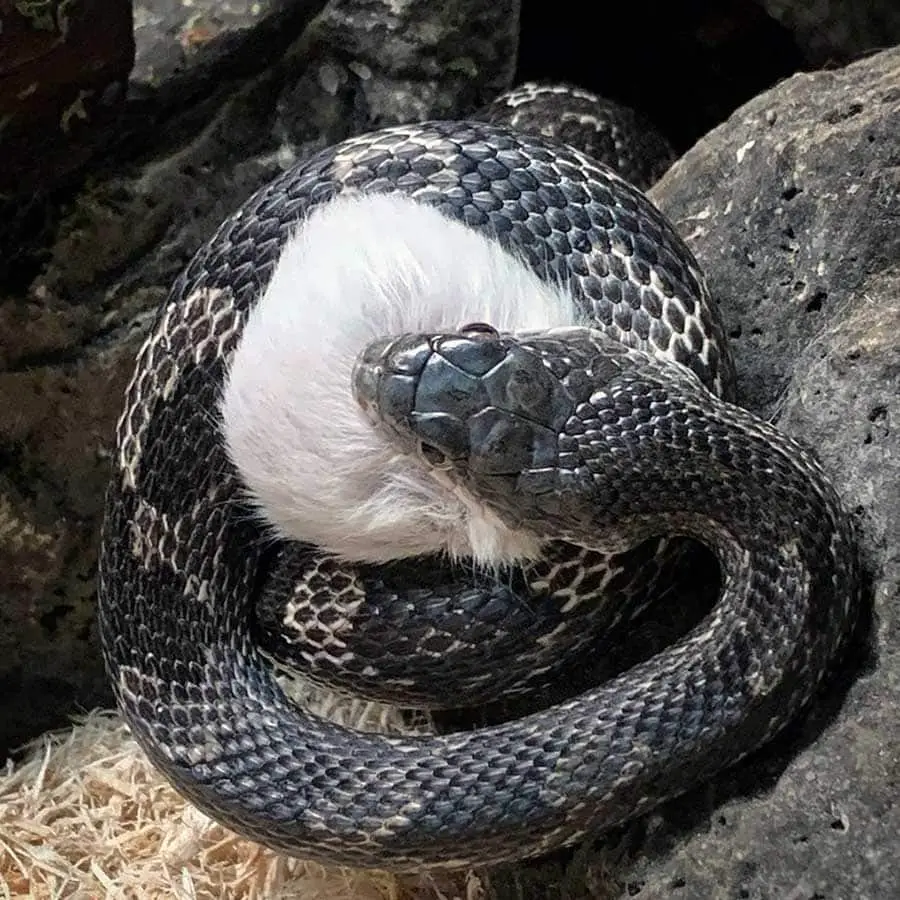
You should aim to feed your snake a mouse that is about the same width as the widest part of your snake. You should see a small lump in your snake after a feeding that goes away within 36 hours.
For hatchlings, you will want to feed a pinkie mouse every 5-7 days. A juvenile that is over a year old will be fed an appropriately sized mouse every 7 days or so. An adult snake will likely be eating adult or jumbo mice every 7-10 days.
Pre-killed prey is safer for your snake, particularly once the snake is large enough to eat adult mice. An adult mouse can fight back and injure a snake. Rats have been known to kill snakes as well.
Even if your snake is only injured, it may be too afraid to try eating live prey after a bad experience. Sticking with frozen and thawed mice is safer.
Micedirect Frozen Mice
- Direct from the producer
- Packed in dry ice, delivered by FedEx
- These feeder Mice for snakes are put to sleep with Co2 so they never suffer
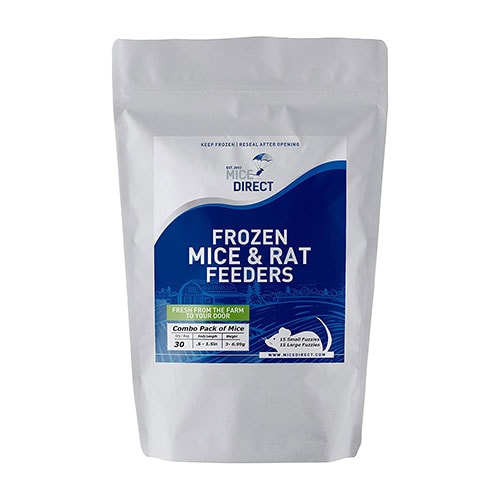
You also avoid the risk of parasites and you can stock up on mice. Frozen mice are much cheaper than live mice and you don’t
need to house a mouse until mealtime.
Remember to avoid handling your snake after a meal to avoid the snake regurgitating the food.
This can injure or kill a snake. If your snake is reluctant to eat, you can try scenting the mouse with more attractive prey like lizards or using a pin to extract some brain from the mouse to make it smell more attractive. Try using feeding tongs to wiggle a thawed mouse to induce your snake to strike.
Summary
We hope you found this article informative. If you have any comments or questions, be sure to leave them below.
